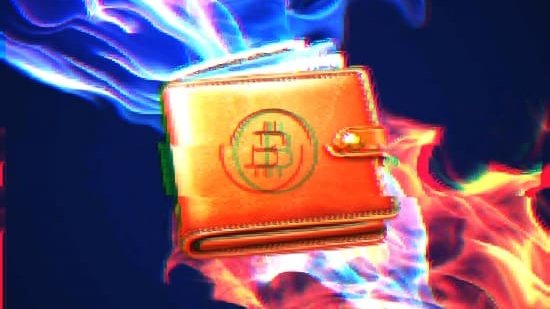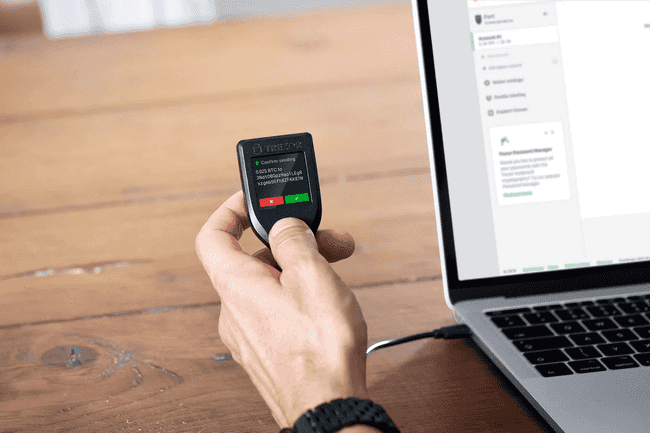A Quick Guide to Crypto Hot Wallets and Cold Wallets

A crypto wallet is a digital wallet that enables users to store their cryptocurrencies. Crypto wallets are of various types, with the most common being digital wallets that can be downloaded as an extension on your browser or as an app on your phone.
A crucial point needs to be understood here. A crypto wallet, unlike usual wallets or savings accounts in banks, is simply a piece of software where your access to crypto assets are stored securely. When you buy a cryptocurrency, you are not getting it like physical cash that you can save in your account and then withdraw it when needed. In fact, you are simply getting a piece of code that “points” to the address on the blockchain where your cryptocurrencies are stored.
There are two major types of wallets that are available within the market: hot wallets and cold wallets. But what is the difference between them? Does a hot wallet refer to a wallet that is always “heated”? Let’s explore this in this article.
Hot Wallets
A hot wallet is one that is always connected to the internet.
When you create an account on a centralized exchange or download a browser extension for MetaMask, then you are essentially creating a hot wallet. In order to use that wallet (that is if you wish to send your cryptocurrencies by buying more coins or using it for trading) then you need to connect to the Internet first.
A cool thing about hot wallets is that they are very easy to set up and use. So, if you are thinking of buying some cryptocurrencies, you can simply download an application (or use a web browser extension) and start buying crypto.
A not-so-cool thing about hot wallets is that in most countries they require your KYC details before you can transfer funds to them. This makes them functionally similar to an online savings bank account - the process is quite similar with the only difference being crypto hot wallets are quite easy to set up.
While ease-of-access makes them more popular among users, there is one crucial factor that users must consider before getting a hot wallet.
Security
Because these wallets always require to be connected to the Internet to function, they are more prone to attacks. This is because the “keys” to these wallets can often be compromised. Wallet keys are pieces of random words stringed together that give you access to your wallet. You get these keys from the wallet whenever you sign up for one. You are advised to keep these keys safely as anyone with access to them can compromise your wallet. Attackers have, in the past, compromised various crypto hot wallets.
Therefore, you are advised to not store a large number of your crypto assets in your hot wallet, especially if you do not plan to use them every day. Instead, you can use hot wallets for trading.
Some examples of hot wallets are MetaMask and Binance Trust Wallet.
Cold Wallets
A cold wallet is a piece of hardware that stores the keys to your wallet. It does not need to be connected to the Internet.
Remember that you will have to connect your cold wallet to the internet if you wish to use them to do a transaction. However, for the most part, if you just want to hold onto some Bitcoin or any other cryptocurrencies, then you can easily use these wallets to securely store your cryptocurrencies. Because they are not connected to the internet, they are considered to be the safest.
There are two major types of crypto cold wallets, hardware and paper wallets. A hardware wallet is essentially a piece of hardware where your crypto keys are stored and visible. The best part about them is that your keys are visible on a tiny screen on the wallet itself. This protects your keys from being visible to any hacker on your computer, making sure that your assets are always safe.
The best thing about cold wallets is that you can easily send money to them using your hot wallet. So, for instance, if you are trading crypto every day and have made a considerable profit, then you can transfer some of that to your hardware wallet while retaining a portion of your earnings in a software wallet (if needed).
A paper wallet is also similar to a hardware wallet, with the only difference being that they are a piece of paper where the wallet’s public address and private keys are stored. A key challenge with these types of wallets is that they can easily be misplaced.
Security
In terms of security, cold wallets are considered to be the safest best for storing cryptocurrencies. Many users rely on cold wallets to store crypto for long term.
Some examples of popular cold crypto wallets are Trezor and Ledger.
Which wallet is the best for me?
Choosing the best crypto wallet depends entirely on your needs and uses. If you wish to use transact cryptocurrencies daily, then you should go for a software wallet. However, if you just want to buy and hold some cryptocurrencies cold wallets are a safer option.
While software wallets are free, hardware wallets can cost anywhere between $50 and $150, depending on the features they offer. Some hardware wallets have a native screen, which can be used to display the private key to the wallet or for asking for confirmation on a transaction.
For hot wallets, exchanges are the most commonly used ones as they are very easy to use and most centralized exchange wallets (such as that of Binance) are considered secure.
Beginners are always advised to deposit a tiny amount in a hot wallet first, as it helps them understand how the wallets work.
